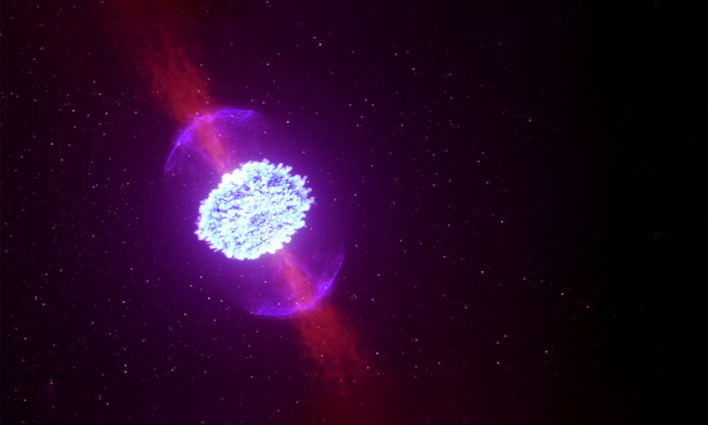Astrophysicists Shocked To Discover A Cosmic Light Burst Didn't Come From A Dying Star
GRBs are described as being the "brightest and most energetic explosions since the Big Bang." These bursts are divided into two classes: GRBs with durations less than two seconds (short GRBs), and those longer than two seconds (long GRBs). For nearly two decades researchers have believed that a GRB on either side of the dividing line must have originated from different sources. Now, a new study has changed that thought process.
After a 50-second-long GRB was detected in December of 2021, a team of researchers began looking for the GRBs afterglow, described as being "an incredibly luminous and fast-fading burst of light that often precedes a supernova." However, instead of finding the typical signature of a long GRB, the team unveiled evidence of a kilonova, a rare event that only occurs after the merger of a neutron star with another compact object (typically another neutron star or a black hole).
"This event looks unlike anything else we have seen before from a long gamma-ray burst," explained Northwestern's Jillian Rastinejad, lead author of the study. "Its gamma rays resemble those of bursts produced by the collapse of massive stars. Given that all other confirmed neutron star mergers we have observed have been accompanied by bursts lasting less than two seconds, we had every reason to expect this 50-second GRB was created by the collapse of a massive star. This event represents an exciting paradigm shift for gamma-ray burst astronomy."

"There are a lot of objects in our night sky that fade quickly," stated astrophysicist Wen-fai Fong of Northwestern University. He went on to explain, "We image a source in different filters to obtain color information, which helps us determine the source's identity. In this case, red color prevailed, and bluer colors faded more quickly. This color evolution is a telltale signature of a kilonova, and kilonovae can only come from neutron star mergers."
As of right now, there is no explanation for why the event was so different in its duration. The rest of the evidence fits nicely into that of a neutron star merger, raising questions with "some incredibly exciting possibilities."
"Studying more of these events will help us determine which is the right answer and the detailed information we gained from GRB 211211A will be invaluable for this interpretation," says astrophysicist Benjamin Gompertz of the University of Birmingham in the UK.
Top Image Credit: Aaron M. Geller/Northwestern/CIERA and IT Research Computing Services

